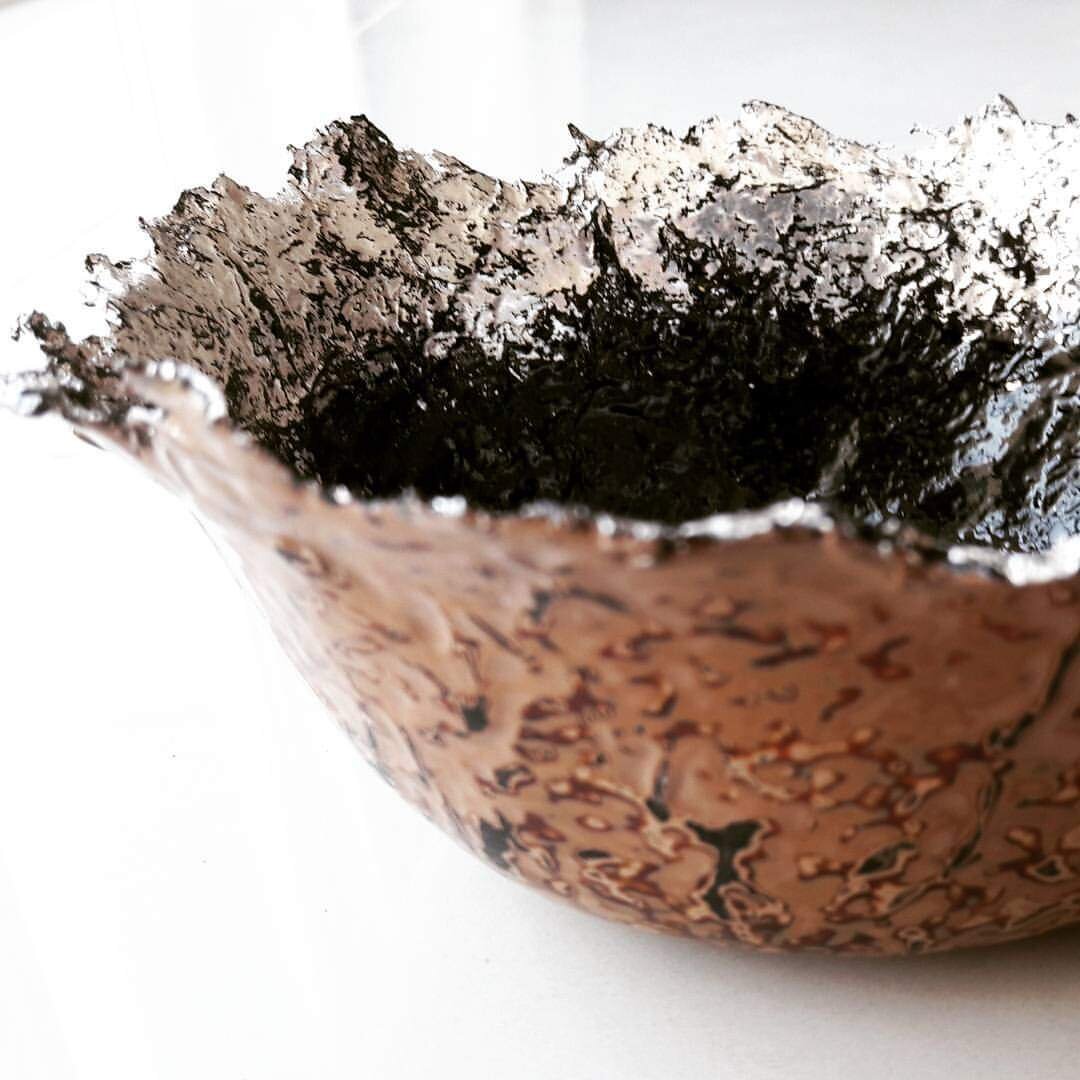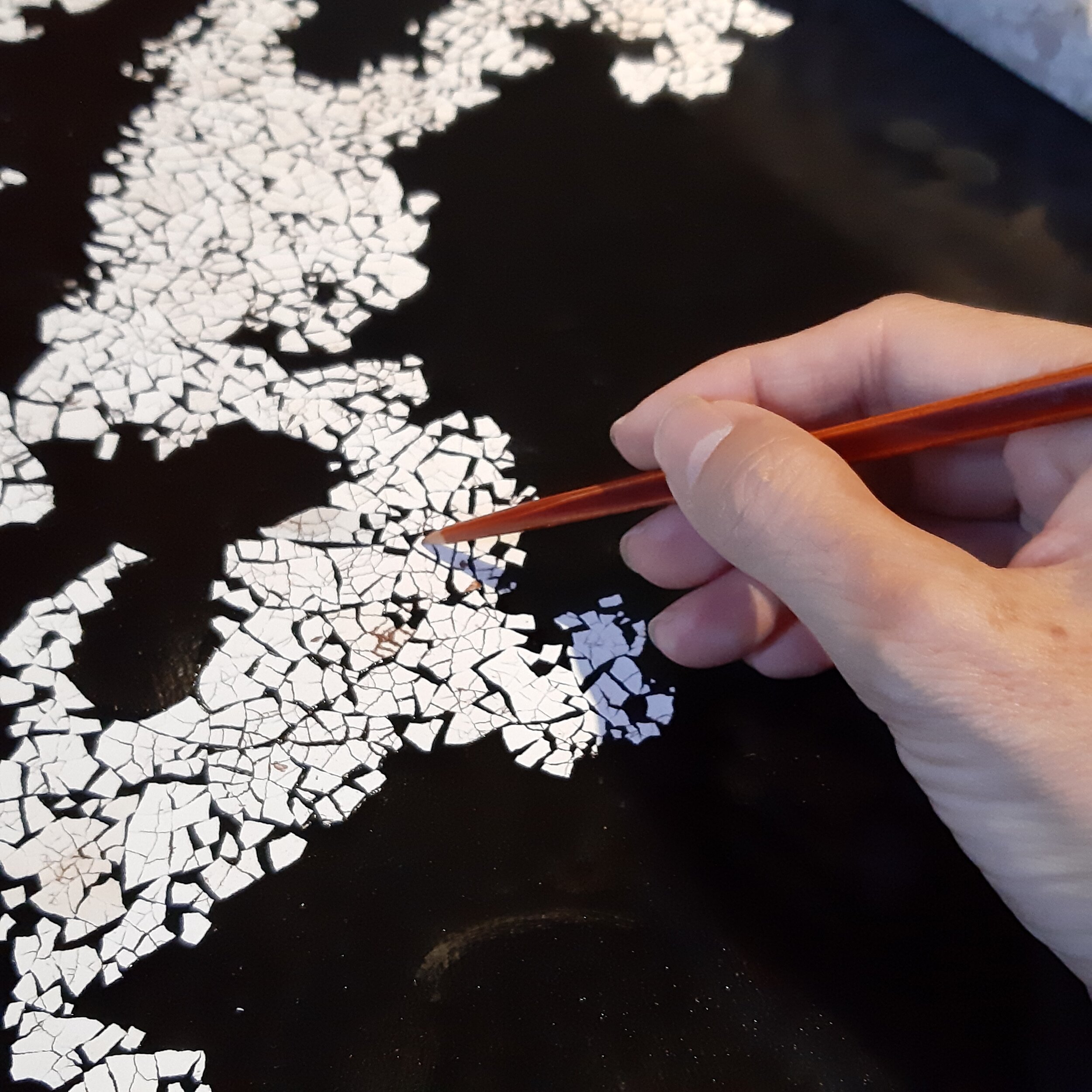Lacquer Art
Skilled artists and craftsmen of Vietnam have mastered a variety of preservation and decoration techniques utilising lacquer.
An enduring art form, sơn mài is unpredictable; artists practice their patience and test their passion to achieve magical beauty.
One of the most enigmatic art styles to have originated from Vietnam is sơn mài, also known as lacquer painting, which has played a tremendous role in Vietnam’s art scene. A culmination of complexity, an arduous process, and certain health hazards have heralded it as a leading contender for the country’s most impressive art form.
The history of Vietnamese art imbues a fusion of influences from China’s rule for over 1,000 years, as well as from the French during the colonial period. Although lacquered items have been discovered inside tombs dating back as far as the 3rd and 4th centuries BC, it wasn’t until the 1930s when a resurgence of the art was given the spotlight. Artists and teachers studying at the Hanoi College of Fine Arts, such as Nguyễn Gia Trí, considered the father of Vietnamese lacquer painting, resurrected the medium along with artisans from craft villages, fusing it with French techniques and positioning it as fine art.
The resin from the cây sơn tree that inhabits the mountains of Phú Thọ Province was originally used as glue and a coating for decorative and protective purposes on wooden works. The Rhus succedanea tree that grows in Vietnam produces a milky sap known as sơn ta. Sơn ta is harvested in a similar manner to rubber: when an incision is made, the sap flows.
The traditional Vietnamese lacquer used in sơn mài is made by either filtering the sap and using this for the base as in sơn sống (raw lacquer), or it can be processed into sơn chính by stirring it for three days to allow the excess water to evaporate, and finally adding pine resin. Sơn chính is usually used for decorative purposes.
Lacquer traditionally comes in three colours, black, vermilion and brown. Black lacquer is achieved as a result of a chemical reaction between iron and lacquer. To acquire a red tint, several shades of the colour are extracted from cinnabar, a naturally–occurring red mineral. The white shade comes from the shells of duck and hen eggs. Sometimes, to get a brownish tint, the eggshells are cleaned and then toasted. Other bright colours seen in today’s art are acquired from synthetic pigments.
After sketching the painting onto a board, the artist begins the laborious process of layering and building colours one by one, using processed lacquer to construct layers of various coloured lacquer, then sanding it smooth and flat to bring out the underlying layers, and finally, polishing the piece to ensure a brilliant lustre. Each can have a maximum of 4 to 5 layers, but as a whole painting, there could be countless numbers of layers with different colours and thickness applied.
The final step traditionally involves dipping human hair into a paste mixed with charcoal, which is used to polish the painting.
Contemporary artist and lacquerista, Saeko Ando, has lived and worked in Vietnam for the past 25 years. She merges traditional Vietnamese lacquer–craft skills and sơn mài painting techniques, learned from past generations of lacquer masters, with original methods she developed over decades of experimenting with Vietnam’s natural lacquer.
Saeko’s artwork seeks to give physical form to the process of utsuroi, the impermanence of all things and the transience of nature, by harnessing Vietnamese natural lacquer’s characteristic of changing over time.
“Working with sơn mài is like being a conductor of a symphony orchestra. Never try to force your intention on them. You learn to harmonize with them to play your music.”
SAEKO ANDO
Saeko's artwork seeks to give physical form to the process of utsuroi, the impermanence of all things and the transience of nature, by harnessing Vietnamese lacquer characteristics that have changed over time.
Many artists say that lacquer is just a material which serves them in their creative work. However, Saeko believes that you won’t go very far if you treat natural lacquer that way.
There are many amazing characteristics of Vietnamese sơn ta that you can utilize to make your artwork intricate and more than just a painting with beautiful colours. Sơn ta has many unique attributes including glossiness, adhesiveness, transparency, and natural brown colours in different shades. All those characteristics are strengthened and enhanced after a certain period of time.
I am a sơn mài artist who creates artworks using natural sap of ‘cây sơn’ lacquer tree, which is indigenous species in Vietnam. I merge traditional Vietnamese lacquer-craft skills and sơn mài painting techniques learned from past generations of lacquer masters with original methods I developed over decades of experimenting with the materials.
I have an academic background in oriental philosophy and Japanese studies. My artwork seeks to give physical form to the process of utsuroi, the impermanence of all things and the transience of Nature, by harnessing Vietnamese lacquer characteristics that have changed over time.
In sơn mài, you use diverse materials and tools rather than just colours and paint brushes. Working with natural lacquer as a base medium which hardens itself by chemical reactions caused by the enzyme contained, I see myself not only as an artist but also as a mad scientist who conjures up unknown creatures and organisms. Nature is my passion and inspiration.


